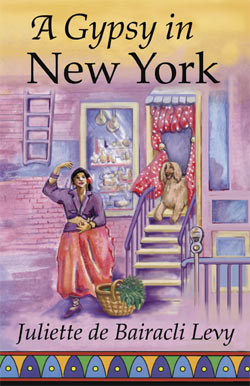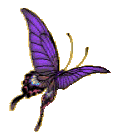A Gypsy in New York
by Juliette de Bairacli Levy
Pre-publication preview courtesy of Ash Tree Publishing
Chapter 1.10, continued from last month…
Carol Cohen remembered a pre-funeral ceremony for a Gypsy queen, in New York, on Henry Street. Like Jean Goldfarb, Carol was a child then.  It was a ground-floor room, made brilliant and dramatic with candles burning in the daytime and heaped flowers of all colors. Teeming Gypsy mourners, mostly black-clad, filled the room. ..
It was a ground-floor room, made brilliant and dramatic with candles burning in the daytime and heaped flowers of all colors. Teeming Gypsy mourners, mostly black-clad, filled the room. ..
A frightened, yet enchanted, party of little
New York schoolgirls determinedly pushed their way into
the room until they had a sufficient viewing place of the
dead Gypsy queen. The children never let go their hold of
each other's hands, as they had agreed before entering.
Their great fear had been the Gypsy reputation of being
child-stealers, and they had decided that that way the Gypsies
could not take them all joined together in a heavy, fleshy
chain of eight little girls!
The queen had been laid out on a cloth-draped
table, her head upon an embroidered pillow, a big candle
at her feet, another at her head. Smaller candles on all
sides. But most impressive had been the jewelry piled upon
her and flashing in the candlelight. Jewels hanging from
the woman's withered ears, around her scraggy neck and burdening
her thin arms. Jewels that scintillated like stars and glowed
like fires. The dazzled Carol Cohen had asked of one of
the Gypsies standing at the side of the old queen:
Will she take all that with her into her grave?
No reply had been spoken by the Gypsy mourner, only such a malignant look of scorn and hate directed upon the inquiring non-gypsy that the little girls, still holding hands, decided in quick consultation that they had seen enough, and it was time to go!
Although I searched carefully, I did not find
any Gypsies in New York during my entire first month there.
The only Gypsies that I saw were embroidered on a medieval
tapestry in French's famous antique shop on Madison Avenue.
I was offering a Chinese butterfly silk shawl of mine for
sale there, and I was invited to look over the many floors
of that wonderful, treasure-packed place. There I came upon
the Gypsies on the tapestry. I was told that it was called
The Birthday of the Empress. It showed the rich being entertained
by a family of traveling Gypsies who were reading the hands
of the empress and her party.
I myself learned fortune-telling from an old Algerian Gypsy, a Madame Caulas of the family Heredia, whom I met in the Rue de la Corderie in the Gypsy quarter of Marseilles. A strange place of shacks, where the riffraff of the town lived along with the Gypsies, who were mostly of the fortune-telling, basket-making, dancer, and street-singer class.  Madame Caulas was considered to be an expert in three forms of fortune telling: hand reading, sand reading, and reading the mysterious Tarot cards of the Bohemians.
Madame Caulas was considered to be an expert in three forms of fortune telling: hand reading, sand reading, and reading the mysterious Tarot cards of the Bohemians.
I did not find it difficult to learn hand reading the Gypsy
way, as taught me by Madame Caulas. Perhaps the old woman
had foretold rightly that I had the Gypsy gift of dukkeripen,
(reading, magic reading). And soon the Gypsies of many lands,
including America and Mexico, were asking me to read their
hands! The deep reading, they call it.
That, said American writer friend Michael
Kuh, is a subject for a cartoon! An English university-educated
young woman, reared in a strict English school, (in my case
it was an old Welsh castle converted into a school for the
daughters of rich English and Welsh gentry) even though
her blood is Turkish, reading the hands of the hard-baked
professional fortune-telling Gypsies of New York!
There was at least one Gypsy fortune-telling
cartoon in the New Yorker. I believe it was. I did not see
it, but another friend, Roy Nicholls, told me about it.
Marked Lexington Avenue, it showed a street window, with
a scarf-draped Gypsy woman's head peering out. Alongside
was a big notice, which read: Psychoanalysis $1, palm-reading
$2.
I did not meet with any Gypsies in New York until well into the New Year, when I came to know many families of them, in Manhattan.
End of Chapter one
by Juliette de Bairacli Levy
Author of Common Herbs for Natural Health






 Order
Order 


